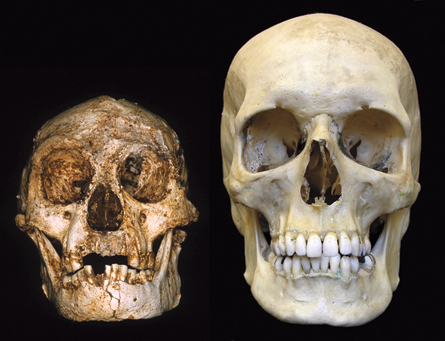- More than 2 years ago
There’s just no getting ahead when you’re a hobbit. Anthropologists are arguing yet again over whether a tiny 18,000-year-old Indonesian skull represents a separate species of little human cousins, or an ordinary Homo sapiens with an abnormally small head.

New data compare the fossil to a large group of modern humans with microcephaly, a genetic condition that makes the head smaller than usual. Measurements of the hobbit skull suggest its proportions fall within the range of microcephalic Homo sapiens, researchers report August 8 in the Proceedings of the National Academy of Sciences.
“Previously published papers that seemed to show that it can’t be a microcephalic are open to doubt,” says coauthor Ralph Holloway, an anthropologist at Columbia University in New York.
The hobbit story began in 2003, when archaeologists unearthed the skull and other bones of a female hominid on the island of Flores. Her discoverers argued she represented a member of a human genus that had survived until relatively recently, and dubbed it Homo floresiensis.
But some scientists charged that because the hobbit’s skull is so small, it might have just been a microcephalic Homo sapiens. To test that question, anthropologist Dean Falk of Florida State University in Tallahassee compared the skull’s internal dimensions to those of nine microcephalic humans and 10 normal humans. In a 2007 paper, she concluded the hobbit skull was still best assigned to its own species.
Now anthropologist Robert Vannucci of New York University and his colleagues, including Holloway, have measured relative brain dimensions using both MRI imaging and internal casts, or endocasts, of skulls. They compared the hobbit’s measurements against those of 21 microcephalic and 118 normal infants and children, along with 10 adult microcephalics and 79 normal adults.
With this larger group to study, Vannucci’s team concludes the hobbit actually falls in the range of microcephalic humans.
But Falk counters that the new work looked at the wrong skulls. Brains keep growing in microcephalics until about the age of four, she says, meaning that most of the infants studied by Vannucci’s team shouldn’t have been included. She also notes that the team at times used handheld calipers to measure rubber endocasts of skulls, which she says is less accurate than the three-dimensional computed tomography imaging used in her study.
Perhaps the only thing the hobbit warriors agree on is the need for more fossils to study. The skull remains the only braincase found of the hobbit people. Archaeologists have, however, unearthed other bones from at least eight other individuals. Together, the remains of these nine tiny people add up to a complete picture of a distinct creature that warrants its own species name, says hobbit co-discoverer Peter Brown of the University of New England in Armidale, Australia.







